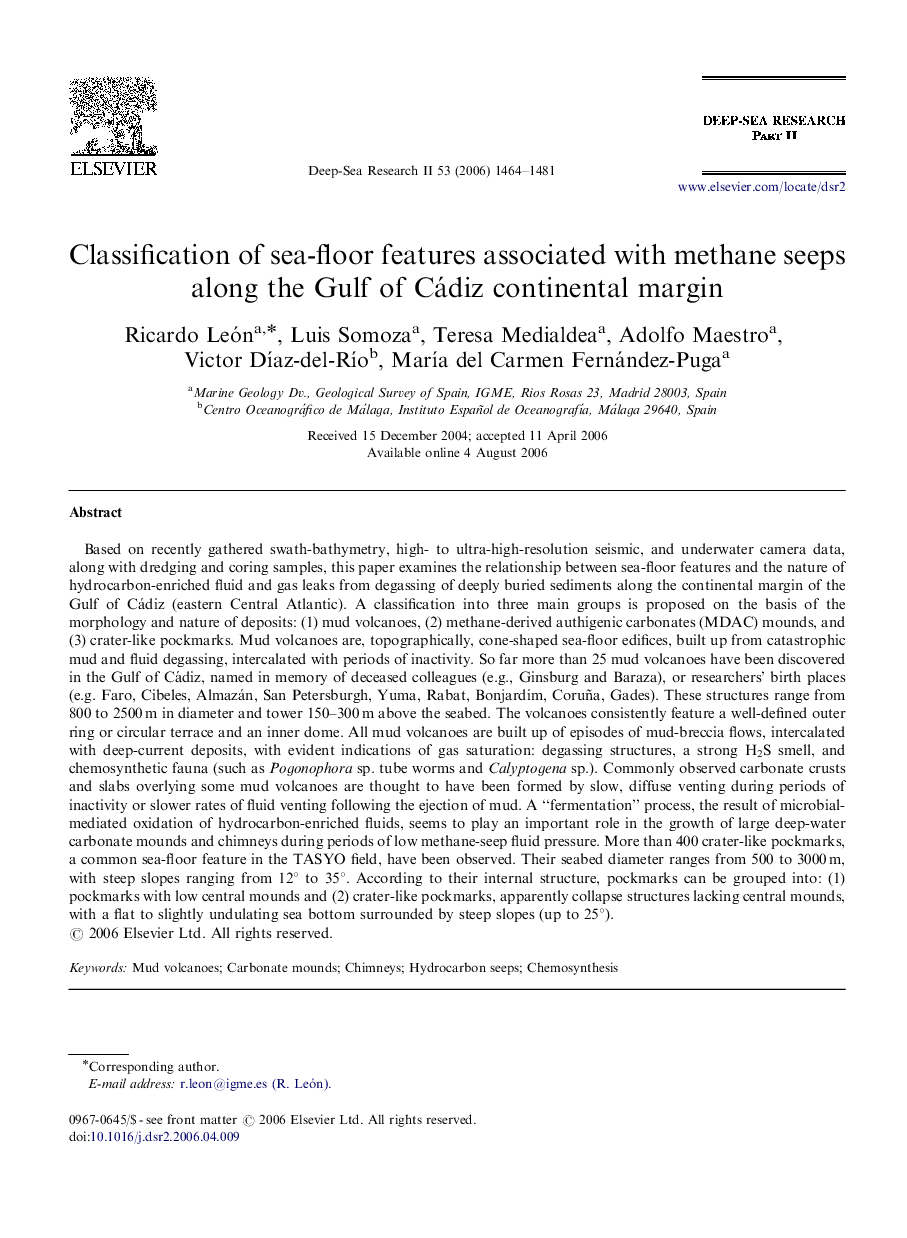| کد مقاله | کد نشریه | سال انتشار | مقاله انگلیسی | نسخه تمام متن |
|---|---|---|---|---|
| 4538304 | 1626515 | 2006 | 18 صفحه PDF | دانلود رایگان |

Based on recently gathered swath-bathymetry, high- to ultra-high-resolution seismic, and underwater camera data, along with dredging and coring samples, this paper examines the relationship between sea-floor features and the nature of hydrocarbon-enriched fluid and gas leaks from degassing of deeply buried sediments along the continental margin of the Gulf of Cádiz (eastern Central Atlantic). A classification into three main groups is proposed on the basis of the morphology and nature of deposits: (1) mud volcanoes, (2) methane-derived authigenic carbonates (MDAC) mounds, and (3) crater-like pockmarks. Mud volcanoes are, topographically, cone-shaped sea-floor edifices, built up from catastrophic mud and fluid degassing, intercalated with periods of inactivity. So far more than 25 mud volcanoes have been discovered in the Gulf of Cádiz, named in memory of deceased colleagues (e.g., Ginsburg and Baraza), or researchers’ birth places (e.g. Faro, Cibeles, Almazán, San Petersburgh, Yuma, Rabat, Bonjardim, Coruña, Gades). These structures range from 800 to 2500 m in diameter and tower 150–300 m above the seabed. The volcanoes consistently feature a well-defined outer ring or circular terrace and an inner dome. All mud volcanoes are built up of episodes of mud-breccia flows, intercalated with deep-current deposits, with evident indications of gas saturation: degassing structures, a strong H2S smell, and chemosynthetic fauna (such as Pogonophora sp. tube worms and Calyptogena sp.). Commonly observed carbonate crusts and slabs overlying some mud volcanoes are thought to have been formed by slow, diffuse venting during periods of inactivity or slower rates of fluid venting following the ejection of mud. A “fermentation” process, the result of microbial-mediated oxidation of hydrocarbon-enriched fluids, seems to play an important role in the growth of large deep-water carbonate mounds and chimneys during periods of low methane-seep fluid pressure. More than 400 crater-like pockmarks, a common sea-floor feature in the TASYO field, have been observed. Their seabed diameter ranges from 500 to 3000 m, with steep slopes ranging from 12° to 35°. According to their internal structure, pockmarks can be grouped into: (1) pockmarks with low central mounds and (2) crater-like pockmarks, apparently collapse structures lacking central mounds, with a flat to slightly undulating sea bottom surrounded by steep slopes (up to 25°).
Journal: Deep Sea Research Part II: Topical Studies in Oceanography - Volume 53, Issues 11–13, June 2006, Pages 1464–1481